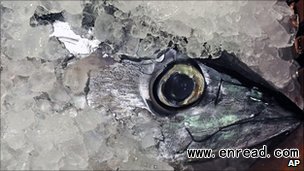| ||||||||||||||||||||||||||||||||||||||||||||||||||||||||||||||||||||||||||||||||
|
Current extinction1 rate projections2 may be overestimating3 the role of habitat loss on species, a study suggest. 一项研究显示,现有物种灭绝速率预测可能高估了栖息地缺失对物种的影响。  The authors acknowledge that the study does not mean concerns for biodiversity can be put on ice Writing in the journal Nature, they said present figures overestimated5 rates by up to 160%, and called for updated, more accurate calculations. But they did add that habitat loss was still the main threat to biodiversity. Co-authors Professor Stephen Hubbell, from the University of California Los Angeles, and Professor Fangliang He, from Sun Yat-sen University, China, said existing mathematical models were flawed. "The most widely used indirect method is to estimate extinction rates by reversing the species-area accumulation curve, extrapolating(推断) backwards6 to smaller areas to calculate expected species loss," they wrote. "Estimates based on this method are almost always much higher than actually observed." In ecology, a species-area curve is used to highlight a relationship between and area of habitat and the number of species found in the area. They added that they defined extinction rate as the fraction of species lost as a result of habitat loss over a period of time. "The area that must be added to find individual of a species is, in general, much smaller than the area that must be removed to eliminate the last individual of a species," the professors observed. "Therefore, on average, it takes a much greater loss of area to cause the extinction of a species." 'Severe reservations' Probably the most authoriative global assessment7 of the status of species is the Red List of Threatened Species, co-ordinated and published by the International Union for Conservation of Nature (IUCN). Jean Christophe Vie, IUCN's species programme deputy director - who was not involved in the research - said it was good that it was a clear effort to "get the science right", but had very severe reservations about how it could be interpreted. "I am quite worried about how this report could be used by people who are reluctant to take environmental issues seriously,"he told BBC News. "We (IUCN assessors) do not use this system between area and species because we know there are flaws. "We have explicit8(明确的,清楚的) details in our guidelines that to estimate extinction is not something we should do; for example, we know that species are not evenly distributed in ecosystems9; habitat loss is not the only threat." Dr Vie explained that, very often, conservation agencies and NGOs tended to mobilise support when species crept towards extinction thresholds. "What is the actual concern is the rate of decline in populations," he went on to say. "You do not see that many extinctions, but you do see many more species that are ending up with very small populations. "So, focusing purely10 on extinctions is - to me - a problem." In their paper, Professors He and Hubbell warned that their study must not "lead to complacency(自满) about extinction (as a result of) habitat loss", which was a "real and growing concern". "We have bought a little more with this discovery, but not a lot," Professor Hubbell observed. 点击  收听单词发音 收听单词发音
|
||||||||||||||||||||||||||||||||||||||||||||||||||||||||||||||||||||||||||||||||
上一篇:苹果成为全球最具价值品牌 下一篇:亚马逊雨林采伐速度显著增长 |
||||||||||||||||||||||||||||||||||||||||||||||||||||||||||||||||||||||||||||||||
- 发表评论
-
- 最新评论 进入详细评论页>>



